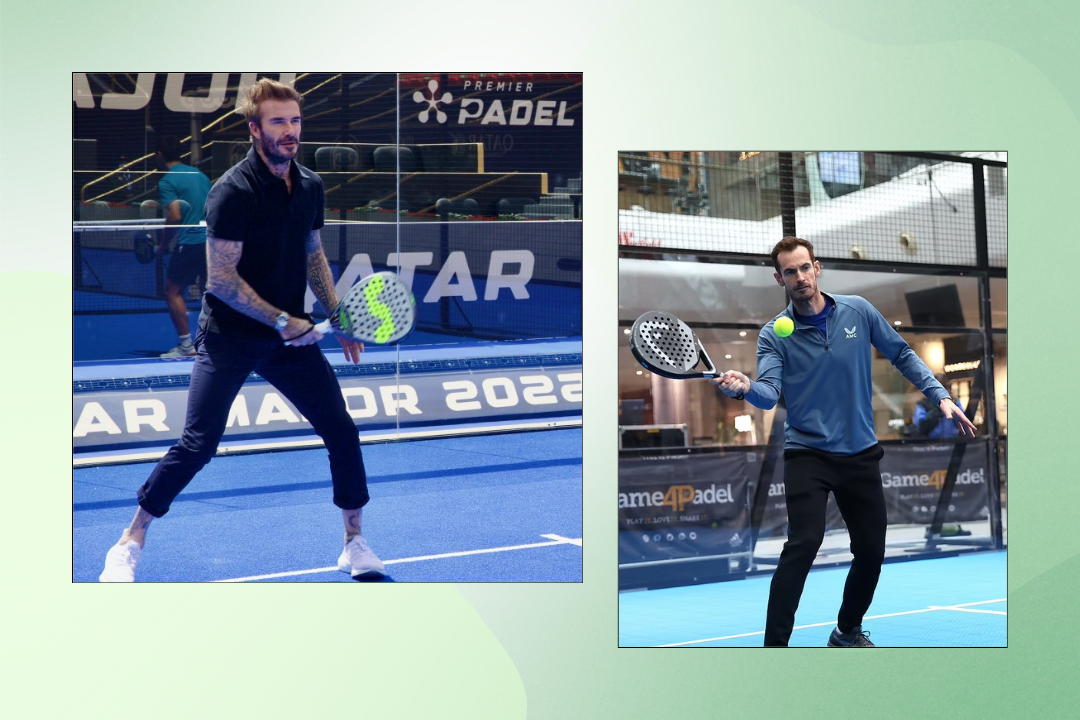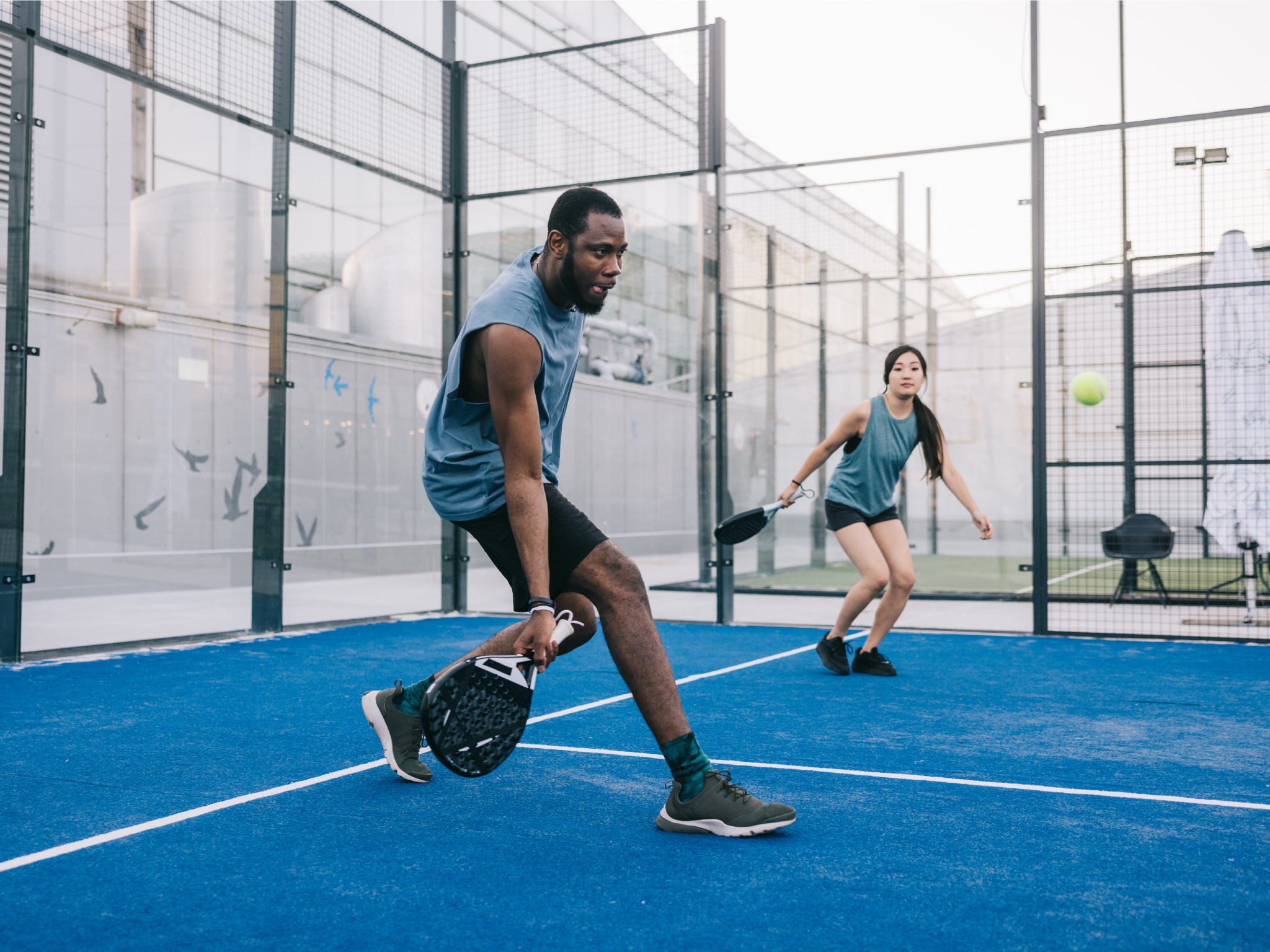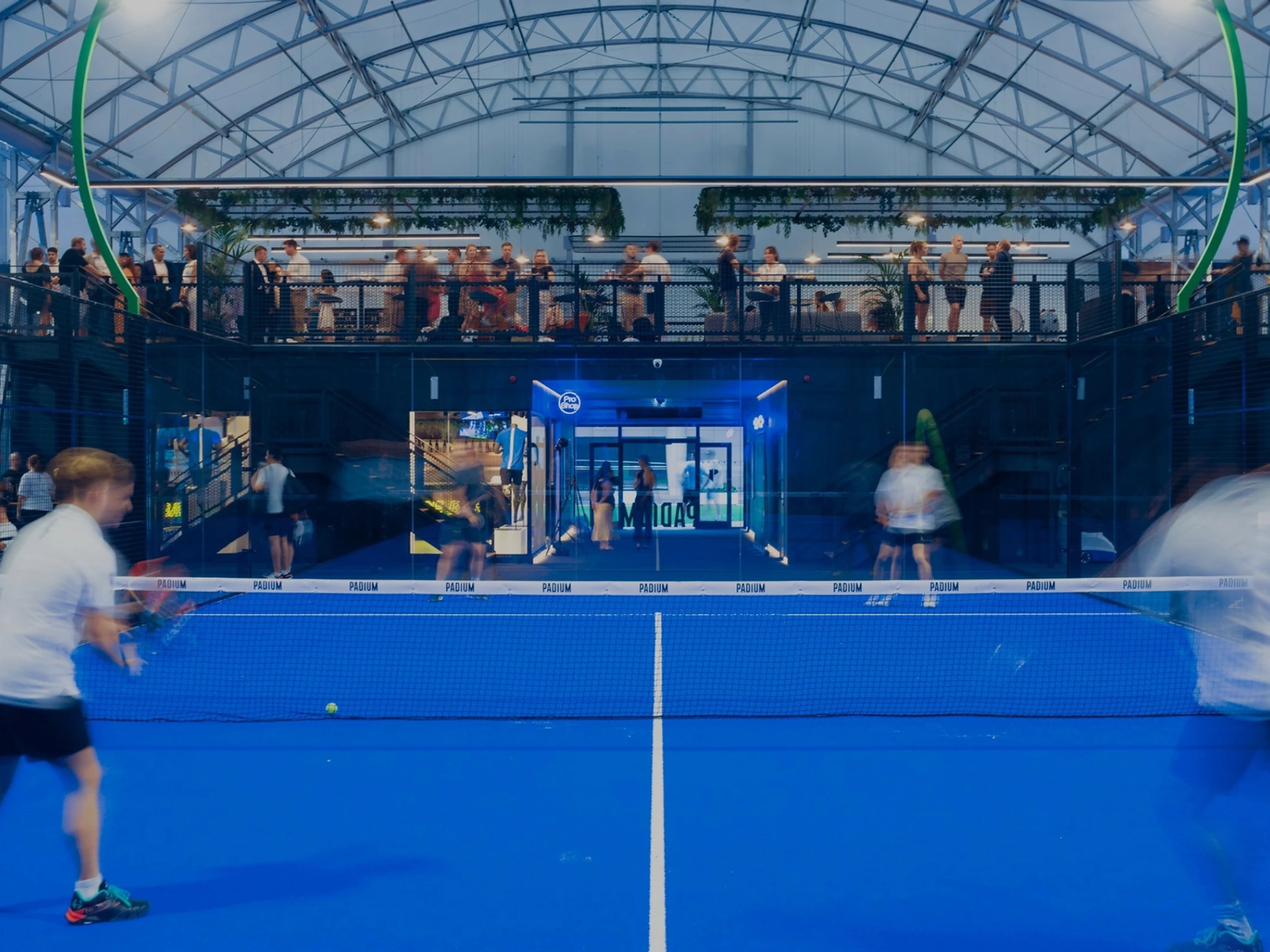Padel is loved by everyone from Kate Middleton to David Beckham – but what is it?
Is it tennis? Is it pickleball? Here’s everything you need to know about padel – the sport sweeping the nation

Your support helps us to tell the story
From reproductive rights to climate change to Big Tech, The Independent is on the ground when the story is developing. Whether it's investigating the financials of Elon Musk's pro-Trump PAC or producing our latest documentary, 'The A Word', which shines a light on the American women fighting for reproductive rights, we know how important it is to parse out the facts from the messaging.
At such a critical moment in US history, we need reporters on the ground. Your donation allows us to keep sending journalists to speak to both sides of the story.
The Independent is trusted by Americans across the entire political spectrum. And unlike many other quality news outlets, we choose not to lock Americans out of our reporting and analysis with paywalls. We believe quality journalism should be available to everyone, paid for by those who can afford it.
Your support makes all the difference.Padel is a sport that’s firmly on the rise. At the beginning of 2024, there were more than 60,000 padel courts worldwide. That’s a 240 per cent increase in the number of courts available in 2021.
And is it any wonder? The Prince and Princess of Wales are fans as are The Kardashians and David Beckham. Andy Murray and Serena Williams have downed their tennis rackets in favour of a friendly padel match and footballers and reality stars alike are getting in on the action.
In the UK in 2020, there were 60 padel courts and that number rose to more than 400 in 2023, with an average of 120,000 players grabbing a racket at an amateur level. Padel players from the UK are making their mark at the highest level of the game, while the LTA, the governing body for tennis, has brought padel into its daily operations.
With roots in Mexico and Spain, padel was first recognised as a professional sport in the nineties. It was designed to be a sport for all ages and a far more social affair than tennis – in which you’re usually staring down at a single opponent waiting for your serve or return from across the net.
If you like the idea of giving it a go but don’t know how to play it or what the rules are, read on for our guide to everything you need to know about padel.
What is padel?
Padel is a racket sport with clear influences from tennis and squash in terms of where you play, the rules, scoring and some of the skills and shots involved. It’s a sport played in doubles, which ensures you’ll be in more contact with the ball than other technical racket sports. It’s played on dedicated courts that look similar to tennis courts, but also incorporate walls and a cage where you can play your shots off of. That’s where things feel a bit more like squash.

Padel uses rackets that are shaped similarly to tennis ones, though they don’t include strings, replacing them with either full carbon fibre or fibreglass faces. You’ll be striking balls that look and feel like tennis balls but are actually smaller and less pressurised, which means they offer less bounce than tennis balls.
How do you play padel?
The core principles of padel are similar to tennis. You play games and sets and you need to win six games to win a set by two clear games. The points are the same as tennis and that includes calling deuce when the scores are 40-40.
Like tennis, a player serves for an entire game, though serving is done underarm. The ball must go over the net and bounce on the other side of the court before the ball can be returned. The walls in padel can be used to play shots to help get the ball into the opponent’s court.
Read more: These UK hotels all have padel courts, from Somerset to the Scottish Highlands
You can also let an opponent’s shot hit a wall before you return it, which may improve your angle or create a more awkward one for your opponent to return the ball. If you serve and it directly hits the wall or cage without bouncing, the shot is called out.
How big is a padel court?
A padel court measures 20m long by 10m wide, with similar characteristics to a tennis court like service lines at either end, a centre line and a net where the ball needs to cross over. A tennis court typically measures 23m by 8.23m for a singles court or 10.97m for a doubles court – a further indicator that padel is a sport built for doubles play. A padel court will also be surrounded by walls or a cage, typically measuring up to 4m high and made from glass or brick to make sure there isn’t any sort of irregular bounce when the ball strikes it.
Do you have to be very fit to play padel?
“You can have a good workout playing padel,” says Ben Nichols, founder and CEO of Padel 22, a global communications consultancy that’s seeking to grow the sport globally. Nichols also previously looked after the PR for the British padel team. “It’s not as athletic as squash so that’s not going to put people off because it’s a strenuous activity. Put it this way, you can do it without being able to run a marathon. That instantly makes it more inclusive, for people who don’t consider themselves as athletic that can easily get on the court and can enjoy a game.”
Do you need to play other racket sports to play padel?
“No, you don’t need to have any prior racket sport experience to play padel,” says Houman Ashrafzadeh, founder of Padium, a padel club in Canary Wharf that has seen around 10,000 to 15,000 people come through its doors since it opened in August 2023. “It’s a lot easier to learn than tennis, but it’s hard to master. There isn’t a steep learning curve to play padel. We see from our statistics that it takes people two padel sessions to feel like okay, I can do this.”

“It definitely helps having played tennis or squash for different reasons,” says Nichols. “It’s a miniature tennis court so there’s similar reactions and the sort of volleys played, but there’s also the squash element of having the walls that can throw tennis players. I’d say being a tennis player is probably slightly more advantageous than being a squash player, but I think both of those help.
You don’t need to be a racket sports player to get up to a good level quickly and that’s the biggest asset padel has, the speed at which you can pick it up and enjoy it. I think that’s what puts people off a lot of other sports, is just how long you have to practise it, particularly when you get to an adult age.”
Can you play padel as singles?
Unlike tennis, padel is made to be a sport that you grab a partner for, and most courts will be designed for doubles, though there are single courts available at some clubs.
If you do opt for playing singles, the scoring is the same and it’s the same area of play. When serving, players must serve from behind the baseline diagonally, across the net to the opponent’s service court. The receiver must let the ball bounce before returning the ball. If they don’t, they lose the point. Just like a game of singles tennis, you’ll need to work the court more than you would in doubles, but fundamentally the game is played out the same.
“It’s a bit more of a selfish and highly competitive, independent sport in that way,” says Nichols. “Where padel thrives is with the interaction with other people, whether it be your partner or the people on the other side of the net.”
If you’re struggling to get a quartet together or a friend drops out from your planned game, there are smartphone apps, such as Playtomic that are designed to help you find teammates or another duo to put your skills to the test against.
Do more men than women play padel?
According to the 2024 World Padel Report by the International Federation of Padel, amateur players globally are made up of 60 per cent men and 40 per cent women. Ashrafzadeh says that it’s been a split of 80/20 of men and women in terms of those that have turned up to play at Padium and it’s striving to to get that closer to a 50/50 split. “I think there’s no reason it shouldn’t be an equal split or close to that because there’s no history with padel being a men’s sport,” says Nichols. “We’re not trying to change something here. It’s a blank canvas.”
How does padel differ from pickleball?
Pickleball is another fast-growing racket sport and there are some similarities with padel in how and where it’s played. The biggest differences between padel and pickleball start with the court size, with padel being played on a larger court. The court design is also different, with a padel court more closely aligned to a tennis court, while a Pickleball court places the service areas much closer to the net.
Read more: Pickleball is only getting more popular – tennis is running scared
You also don’t get walls to play off in pickleball like you do in padel. There are differences in the equipment used with padel using rackets made from fibreglass or carbon fibre, while pickleball rackets are made from plastic. You’ll also be hitting a ball in padel that looks more like a tennis ball, compared to the plastic ball used in pickleball, which is designed to reduce the level of bounce and make it a more suitable ball for a smaller court space.
Though, like padel, the sport is growing quickly, particularly in the US. “There are so many pickleball courts being built because they are very cheap in comparison to padel ones,” says Nichols. “You don’t need the glass or the cage and it’s an even easier sport to play so that’s what Pickleball has in its armoury.”
Does it cost more to book a padel court compared to a tennis court?
Currently, the way to book a court for padel can vary by club and where courts are currently located. Some operate on a pay-and-play basis, while others might require a membership.
“You can probably book a tennis court for £20 for an hour for an entire court that’s twice the size of a padel court. That’s not really possible in padel,” explains Ashrafzadeh. “Padel requires a ceiling height for example, so the properties you need to get into to play are so few and limited. The rents padel clubs are paying to operate in those locations is far greater than most tennis clubs and therefore the price per hour can be significantly higher.”
“I’m seeing massive differences in cost,” says Nichols. “I think initially we’re going to see the price being quite high, and we’re going to question if we’re trying to make this a very inclusive, accessible sport, isn’t price a deterrent to that? That price should come down as there’s more competition and there are more options because people can then choose, do they go to a club where they have to get a membership or do they go somewhere where they can book locally, at a local park?”
What is the best way to start playing padel?
“Most clubs actually offer introductions to padel sessions”, says Ashrafzadeh. “They typically last around one to one and a half hours with a coach with four players. You can get a good taste of padel and the rules. Towards the end of the session, you get to actually play a game.”
“It’s a sport that everyone can play. There’s no hierarchy in the sport” says Nichols. “I’ve yet to find in two years of doing this, anyone that hasn’t enjoyed padel, and that’s rare in a sport. You probably won’t look back and you know it could change your life in terms of it becoming an obsession.”
Voucher codes
For the latest offers on sports, fitness and more, try the links below:
Want more info and exercise tips? Check out our guide on running your first half marathon




Join our commenting forum
Join thought-provoking conversations, follow other Independent readers and see their replies
Comments